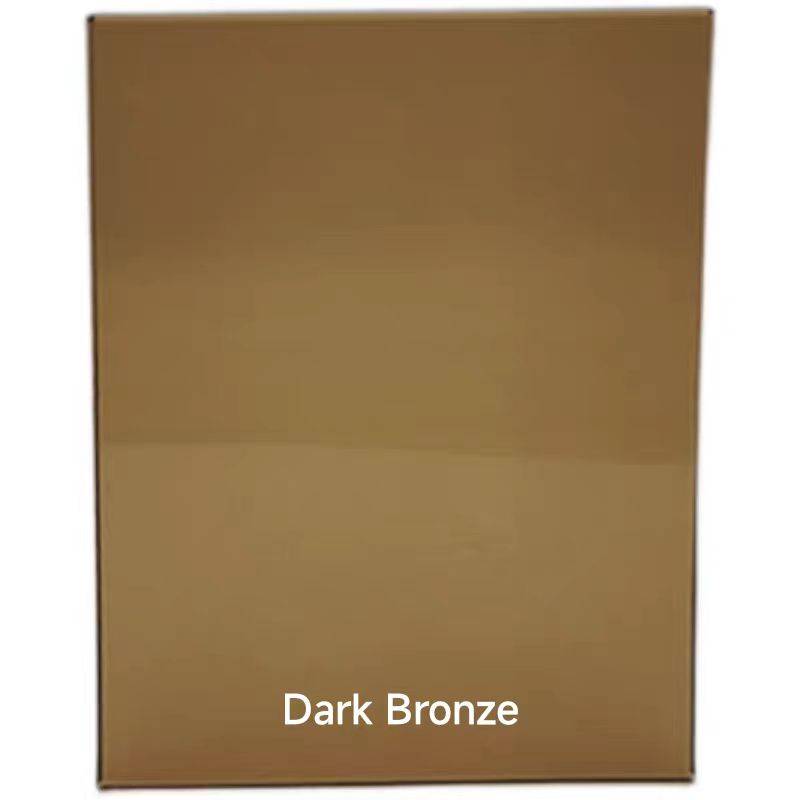

The Allure and Functionality of Brown Reflective Glass
Brown reflective glass has become a popular choice in architectural design and interior decoration, offering a blend of aesthetics, functionality, and energy efficiency. As a variant of reflective glass, its distinctive brown hue adds warmth and character to buildings and spaces, making it an appealing option for a variety of applications.
One of the primary reasons for the growing popularity of brown reflective glass is its unique ability to enhance the visual appeal of structures. The warm tones of brown can complement various architectural styles, from modern and minimalist to traditional. When used on facades, brown reflective glass creates a stunning visual effect, reflecting the surrounding landscape while providing a harmonious integration with nature. This feature is particularly desirable in urban settings, where buildings strive to coexist with their environments, minimizing the stark contrast between man-made structures and natural elements.
In addition to its aesthetic qualities, brown reflective glass serves practical purposes. One of the key benefits of reflective glass is its capacity to reduce glare and improve comfort for occupants. The reflective surface works by bouncing back a portion of sunlight, which helps in regulating indoor temperatures. This reduction in solar heat gain leads to a more comfortable living or working environment while also decreasing the reliance on air conditioning systems. As a result, buildings with brown reflective glass can achieve improved energy efficiency, reducing overall operational costs.
Moreover, the energy-saving potential of brown reflective glass extends beyond just temperature regulation
. By limiting the amount of direct sunlight that enters a space, it alleviates the need for excessive artificial lighting. Natural light contributes positively to psychological well-being, but too much direct sunlight can lead to discomfort and increased utility bills. Therefore, brown reflective glass strikes a balance between embracing natural light and preventing overwhelming glare, creating an inviting atmosphere indoors.
Environmental sustainability is another significant factor in the rising demand for brown reflective glass. Many manufacturers are now focusing on producing glass that meets green building standards. The use of such materials not only benefits the environment by minimizing energy consumption but also aligns with the growing global emphasis on sustainable architecture. By choosing brown reflective glass, architects and builders contribute to reducing the carbon footprint of their projects, promoting a more sustainable way of living.
Safety and security are also crucial considerations in the building industry, and brown reflective glass does not fall short in this regard. The thickness and integrity of reflective glass often offer added resistance to breaking, providing an extra layer of security for both residential and commercial properties. This durability ensures that buildings not only look aesthetically pleasing but also maintain a standard of safety that occupants can trust.
Furthermore, as urban areas become increasingly congested, the need for privacy in public spaces is more pronounced than ever. Brown reflective glass can act as a visual barrier, allowing occupants to enjoy their space without unwanted scrutiny from the outside. This feature is especially beneficial in high-density areas, where buildings are close together, and residents often seek solace from the hustle and bustle of urban life.
In conclusion, brown reflective glass is a versatile and appealing choice for modern architecture. Its unique aesthetic qualities, energy efficiency, and environmental benefits address the current demand for sustainable building practices. As more architects and designers recognize the advantages of brown reflective glass, it is likely to continue playing a significant role in the evolution of contemporary architectural design, offering both beauty and practicality to the spaces we inhabit.